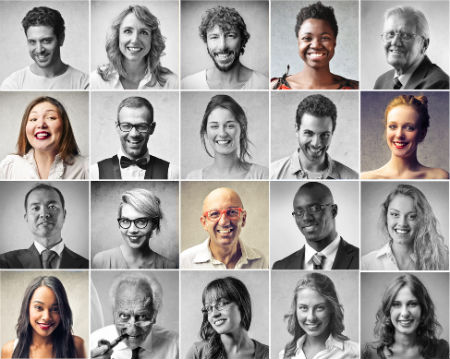
In the 2014 B2B Content Marketing Trends report from Content Marketing Institute and MarketingProfs, the top challenges that B2B content marketers face include: lack of time, not being able to produce enough content, not being able to create the kind of content that engages, lack of budget, and lack of content variety.
Sound familiar?
Stats like “Buyers are two-thirds to 90% through the sales funnel before they contact sales” (Forrester) and “72% of B2B buyers use social media to research solutions to purchase.” (DGR 2014 B2B Buyer Behavior Survey) have a lot of B2B marketers focusing on content and social media programs that require far more resources and time to deliver leads than most business managers have patience for.
As a long time B2B marketer operating with very little budget (self imposed of course), few resources and huge obligations to produce a quantity of quality content that can attract, engage and convert new business – I’m intimately aware of the top challenges revealed in the CMI study.
Producing high quality content consistently over a period of time is only part of the battle. In today’s age of information overload, amplification and promotion are essential in order for that great content to get noticed. Outside of advertising and the outright purchase of traffic, there isn’t much in the way of organic amplification options outside of the increasingly difficult practice of SEO and the moving target of organic social media.
And yet there is one approach that has been delivering great returns.
One of the most effective ways to shortcut your path to B2B content marketing success is to align with those that already have it.
Consider this: If you can find a way to solve multiple problems for your target audience working with influencers that are already known as experts in those solution areas, your brand will grow your own networks of influence, expand reach to new audiences and increase influence as a trusted authority for what your customers buy. That’s a winning set of outcomes in my book.
To put this approach into action, here are 5 essential steps for tapping into the hidden value of working with influencers for B2B content marketing programs:
1. Influencer Marketing Goals

A big part of identifying influencer content goals is about understanding what’s possible. Here are a few suggestions:
- Change how the brand is perceived
- Connect with a new audience of buyers
- Support thought leadership and PR goals
- Support content, social media and search marketing programs
- Create relationships with industry experts
- Increase the quality of leads
- Shorten sales cycle
- Increase the number of referred leads
- Increase organic media mentions
I could go on and on, but you get the idea.
2. Topic and Content Type Selections
Think of how your brand wants to be known – what does the company, product or service really stand for? Then empathize with your target audience to hone in on what information customers actually need in order to buy from you. Topic selection is about being the best answer for the core questions: How do you want to be known as a brand? What information do buyers need to move from awareness to interest to inquiry?
Understanding your distinct audience groups can reveal content types that resonate best based on platform and buyer preferences. Typically, there’s an anchor piece of content that’s robust like a research report, ebook or white paper supported by complementary content types like blog posts, articles in industry publications, videos, infographics, or sponsored content. Content plans should map topics with content formats and media to provide a roadmap of how the co-created content will be published, promoted, and repurposed.
3. Identify, Qualify and Recruit Influencer Participants
With a clear understanding of the key goals, topics and content, it’s time to find influencers that are already known as authorities in those areas. In fact, your industry participation should have revealed some of the more obvious candidates long before you need them. Influencer discovery tools can be effective at finding and qualifying niche influencers. Examples of such tools includes Traackr, Followerwonk, or GroupHigh.
Once you’ve identified your key B2B influencers, it’s important to qualify them. Balance qualification according to metrics like size of network along with quality of interactions. It’s not enough for an influencer to be dubbed “famous”. They also need to be effective in their ability to influence change of perspective and likelihood to take action amongst their own community.
To warm the waters, create opportunities to engage with influencers, before the ask to participate in your content project. Engage through commenting on their blog posts, connecting on social networks, getting introduced through mutual connections and being useful. Then, learn what they value before soliciting participation. If it’s mostly fame, that’s pretty easy. If it’s a higher purpose, you’ll need to find a way to make a connection between the project you’d like to work together on and that thing that inspires the influencer to do what they do.
The more influential, well known and respected you and the brand you work for are, the easier it will be to secure participation from the top tier influencers. Always work on enhancing your own reputation as you create value for your influencer partners.
4. Create and Promote the Co-Created Content
Once you gain agreement to participate, it’s time to collect content. Usually this can be done via email, but you might need to do it by phone and transcribe the conversation. Understand that most B2B influencers are very busy, so make participation attractive and easy for them. They must see that a nominal effort on their part will result in a substantial return.
Provide information that will make it easy to promote the finished product too, whether it’s a report, and eBook or an info graphic. Pre-write social shares, provide a preview and emphasize success.
Organic content promotion in general can work well with a hub and spoke model where the hub is the focal point for your content on a particular topic and the spokes are channels of distribution for engaging community and promoting content. Those channels are most often social networks, but can include email lists and paid promotion channels as well.
5. Optimize Content Performance
With content performance optimization, it starts with clear goals and identifying the key performance indicators or metrics that you will track to determine that your program is on or off track.
For the influencer(s), track the social shares they make of the content, engagement that results and the performance of their contributions. Do they get mentioned by other blogs, is their content getting on-page engagement via comments or specific social shares? Is the content referring traffic and inquiries effectively to your landing pages?
For the overall content program, monitor promotion metrics like social shares, pickups in industry media and blogs, look at referring traffic sources from social networks, search engines and direct referrals. Evaluate the program like you would any other content marketing initiative to determine the impact on overall program, marketing and business goals.
Establish benchmarks from the start and monitor post launch to determine trends and outcomes. Did the project help change the way your brand is talked about on the social web? In the industry? Were you able to connect with a new audience of buyers? Did the co-created influencer content serve as a resource for other marketing and PR initiatives? What could you do to improve performance?
Collecting content performance information will help you refine your approach in all aspects of working with B2B influencers to co-create content: from identifying influencers to the theme of the content to promotions.
For those that want even more insight into this practice of B2B influencer content, I’ll be presenting on this very topic at the Content2Conversion conference in New York May 6-7 this year: “Influencer Content: How to Win Buyers Hearts, Minds and Wallets with Content Optimized for Search, Share and Sales”. I hope to see you there.
Photos: Shutterstock






